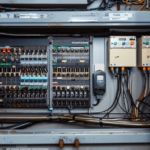Typically, DRaaS (Disaster Recovery as a Service) provides business continuity at the expense of disaster recovery hosted by a third party. It is a solution for hosting and replicating virtual or physical servers using a provider – in case of a power outage or natural disaster. It is the first pledge to make your business stay alive. However, not all business owners are aware of what is DraaS and why it is important. With that being said, let’s discover how does DraaS exactly work.
Disaster Recovery as a Service at a glance
DRaaS is mostly determined as a cloud service model that ensures a company backs up its data and IT infrastructure in a third-party cloud computing environment. This is needed to ensure restoring access and previous functionality to certain IT infrastructure after a disaster-related to natural conditions or power outages. DRaaS allows an organization not to treat workflow recovery after the disaster, but instead rely on the provider. Apart from the risk of natural disasters, DRaaS is helpful for a range of other conditions, including on-premises data center failures, errors related to software or IT systems, network failures, hardware bugs, on-premises power outage, and security attacks.
Besides, the three most common models are used for disaster recovery as providers. The first model of DRaaS is managed one. Managed DRaaS means you give all responsibility of disaster recovery to third parties, including the infrastructure and applications. Using this option, besides, you have to cooperate with DRaaS providers closely. The following model is called assisted DRaaS – the DRaaS provider is responsible for a part of disaster recovery.
At the same time, you as a business owner will need to approve a recovery plan or perform other options. The last type of DRaaS is a self-service one. It goes for the cheapest model since you will be responsible for planning and managing disaster recoveries. At the same time, a vendor will ensure you appropriate backup management software and a remote place for backups. The typical cloud vendors, like Google Cloud or Amazon, are specialized in self-service DRaaS.
Key components of a DraaS solution
1. Flexibility
DRaaS solutions are needed to be flexible enough to suit your requirements. A reliable DRaaS vendor will allow you to control your disaster recovery plan and offer specific options as well.
2. Customer support service
You have to be sure that you can connect with a support team via phone\email if you have any disaster recovery questions. Ideally, a DRaaS vendor will offer 24\7 customer support.
3. Authority
To choose the most reliable DRaaS vendor, you will have to get familiar with users’ reviews. This practice can help you understand whether a provider is trustworthy enough to prevent you from unpredictable disaster situations.
4. Strong infrastructure
A DRaaS provider should work only with high-quality applications and software and have actual security measures. Make sure the infrastructure of your vendor meets all the compliance requirements.
5. Service Level Agreements
You will need to look through the SLAs of your DRaaS provider to understand whether they meet your requirements. Typically, Service Level Agreements include disaster recovery, backup, accessibility, scalability, etc.





